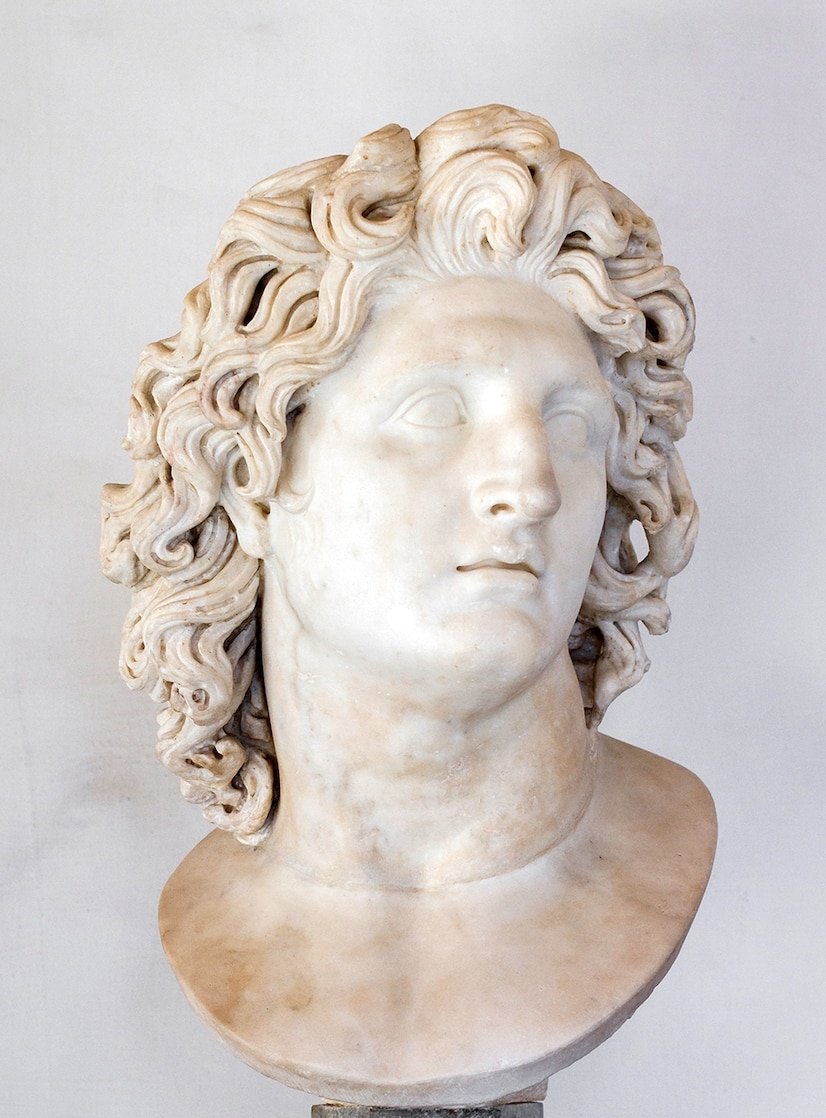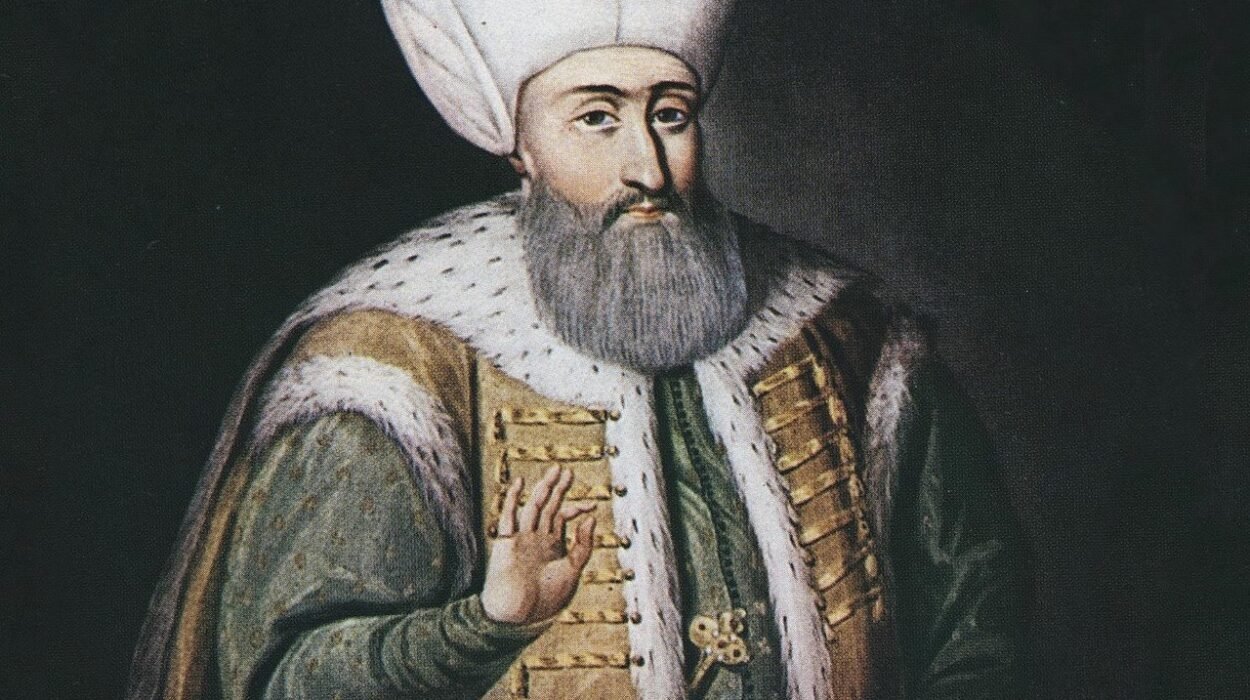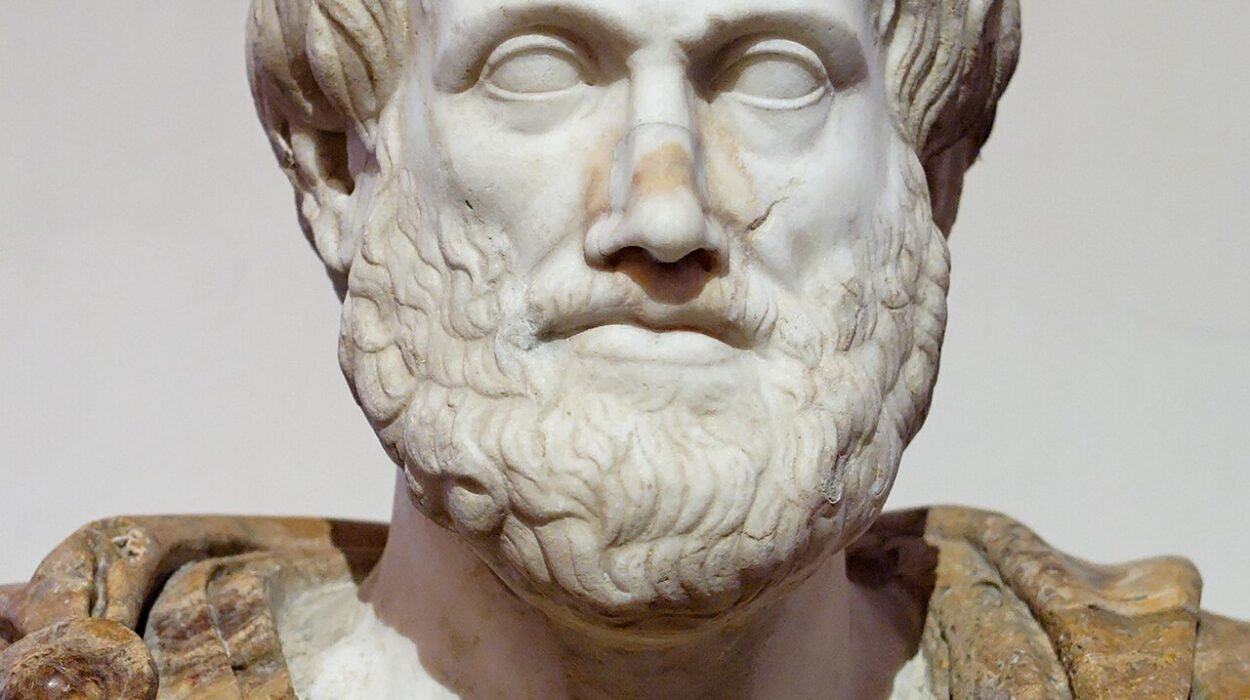Alexander the Great (356–323 BCE) was a Macedonian king and military commander whose conquests reshaped the ancient world. Born in Pella, Macedonia, to King Philip II and Queen Olympias, Alexander was tutored by the philosopher Aristotle, which influenced his future approach to governance and military strategy. Ascending to the throne at the age of 20, he embarked on an extraordinary campaign of conquest that extended from Greece to Egypt, Persia, and into India. His empire spread Hellenistic culture across three continents, blending Greek, Egyptian, Persian, and Indian influences. Alexander’s tactical genius and relentless ambition led to the creation of one of the largest empires in history by the time of his death at just 32. His legacy includes the dissemination of Greek culture and the establishment of cities that became centers of learning and commerce. Alexander’s life and achievements continue to be celebrated for their profound impact on world history.
Early Life and Background
Alexander III of Macedon, famously known as Alexander the Great, was born in 356 BCE in Pella, the ancient capital of Macedonia. His father, King Philip II of Macedon, was a formidable ruler and military strategist who transformed Macedonia into a powerful kingdom. His mother, Olympias, was the daughter of King Neoptolemus I of Epirus and was known for her strong will and intense spirituality. From a young age, Alexander was exposed to the intricacies of politics, military strategies, and the responsibilities of kingship, setting the stage for his future conquests.
From an early age, Alexander showed signs of brilliance. He was tutored by the philosopher Aristotle, one of the most renowned thinkers of the time, who instilled in him a love for knowledge, philosophy, and the arts. Aristotle’s teachings would greatly influence Alexander’s approach to leadership and his views on the world. Under Aristotle’s guidance, Alexander studied a wide range of subjects, including science, medicine, literature, and rhetoric, which equipped him with a well-rounded education that complemented his natural intelligence and ambition.
Alexander’s early experiences were not without challenges. His father, Philip II, was often away on military campaigns, leaving young Alexander to be raised in a court filled with political intrigue. Despite these challenges, Alexander developed a close bond with his father and admired his military prowess. However, the relationship between Philip and Olympias was strained, leading to tensions that would later affect Alexander’s path to the throne.
One of the pivotal moments in Alexander’s early life occurred in 340 BCE when Philip left him in charge of Macedonia as regent while he campaigned against Byzantium. Although Alexander was only 16 years old at the time, he proved to be a capable leader. During his regency, he successfully quelled a rebellion by the Thracian Maedi, capturing their stronghold and establishing a city, which he named Alexandropolis.
In 338 BCE, Alexander further demonstrated his military prowess at the Battle of Chaeronea, where he played a crucial role in the defeat of the combined forces of Athens and Thebes. This victory solidified Macedonia’s dominance over Greece and showcased Alexander’s potential as a military leader. Despite his youth, Alexander’s bravery and tactical acumen earned him recognition and respect among the Macedonian army.
However, the relationship between Alexander and his father became increasingly strained as Philip sought to consolidate his power and remarry. The tension came to a head when Philip married Cleopatra, a Macedonian noblewoman, in 337 BCE. This marriage threatened Alexander’s position as heir to the throne, as any male offspring from this union would have a stronger claim to the Macedonian throne. The tension between father and son escalated, leading to a brief estrangement.
Philip’s assassination in 336 BCE, under mysterious circumstances, brought an abrupt end to this conflict. At the age of 20, Alexander ascended to the throne of Macedonia, facing the immediate task of securing his position in a kingdom rife with potential rivals. Many suspected that Olympias might have been involved in Philip’s assassination, further complicating Alexander’s early reign. Nonetheless, Alexander quickly demonstrated his authority by eliminating potential threats to his rule and solidifying his power within Macedonia.
With his position secure, Alexander set his sights on realizing the grand ambitions that his father had only partially achieved. Philip had laid the groundwork for an invasion of the Persian Empire, a plan that Alexander would inherit and ultimately bring to fruition. The stage was set for Alexander to embark on a series of campaigns that would lead to the creation of one of the largest empires in history and earn him the title “the Great.”
Ascension to the Throne and Consolidation of Power
Alexander’s ascension to the throne in 336 BCE marked the beginning of a reign that would dramatically alter the course of history. His first priority as the new king was to consolidate his power within Macedonia and the Greek states, which were still reeling from the assassination of Philip II. Alexander faced a complex and potentially dangerous political landscape, with many Greek city-states eager to seize the opportunity to regain their independence from Macedonian hegemony.
Upon becoming king, Alexander acted swiftly to secure his position. He moved decisively against internal threats, executing all potential rivals to the throne, including members of the Macedonian nobility who were suspected of being disloyal. Among those executed was his cousin, Amyntas IV, who had a legitimate claim to the throne. By eliminating these threats, Alexander ensured that no one within Macedonia could challenge his authority.
Alexander’s consolidation of power extended beyond Macedonia’s borders. In the wake of Philip’s death, several Greek city-states, including Thebes and Athens, saw an opportunity to rebel against Macedonian rule. However, Alexander acted with remarkable speed and decisiveness. He led his forces south into Greece, where he met little resistance due to his reputation and the memory of Philip’s military might. The League of Corinth, a coalition of Greek states that Philip had established, quickly reaffirmed its allegiance to Alexander, recognizing him as its leader.
To secure his dominance, Alexander sought to demonstrate his military capabilities and quell any doubts about his leadership. One of his first actions was to march on the city of Thebes, which had openly defied Macedonian authority. In 335 BCE, Alexander laid siege to Thebes, ultimately destroying the city after a fierce battle. Thebes was razed to the ground, and its population was either killed or sold into slavery. This brutal response served as a warning to other Greek states and effectively crushed any further thoughts of rebellion.
With Greece firmly under his control, Alexander turned his attention to the broader Macedonian kingdom and its neighbors. He secured alliances with the Illyrians and Thracians, tribes that had traditionally posed a threat to Macedonian security. By marrying off key Macedonian nobles to the daughters of these tribal leaders, Alexander solidified these alliances and ensured the stability of his kingdom’s borders.
In addition to securing Macedonia’s external borders, Alexander made several key administrative and military reforms to strengthen his rule. He reorganized the Macedonian army, building on the reforms introduced by his father. The army was divided into various units, each with specialized roles, including the famous Macedonian phalanx, which became the backbone of Alexander’s military successes. He also expanded the use of cavalry, which would play a crucial role in his future campaigns.
Alexander’s consolidation of power also involved diplomatic efforts. He worked to maintain the delicate balance of power among the Greek city-states, ensuring their loyalty through a combination of diplomacy and military might. He retained the League of Corinth, which Philip had established, as a means of maintaining Greek unity under Macedonian leadership. The league provided Alexander with the necessary support for his future campaigns against the Persian Empire, as it legitimized his leadership and provided a framework for the Greek states to contribute troops and resources to his cause.
By 334 BCE, just two years after ascending to the throne, Alexander had successfully consolidated his power within Macedonia and Greece. His authority was unchallenged, and he had established himself as a formidable leader both at home and abroad. With his kingdom secure, Alexander could now focus on fulfilling his father’s ambition: the invasion of the Persian Empire.
The invasion of Persia was not only a military endeavor but also a deeply personal one for Alexander. He viewed it as a way to avenge the Persian invasions of Greece during the Greco-Persian Wars and to fulfill the legacy of his father, who had initiated the plans for the campaign. For Alexander, the conquest of Persia represented the ultimate test of his abilities as a leader and a warrior, and it would become the defining achievement of his life.
The Invasion of Persia: The Battle of Granicus
In 334 BCE, with his power consolidated in Greece and Macedonia, Alexander embarked on his most ambitious campaign: the invasion of the Persian Empire. This campaign would take him across Asia Minor, through the heartlands of Persia, and eventually to the borders of India. The invasion began with a series of battles that would demonstrate Alexander’s military genius and set the stage for his conquest of one of the largest empires in history.
The first major engagement of the campaign was the Battle of Granicus, fought in May 334 BCE. The Granicus River, located in northwestern Asia Minor, was the site where Alexander’s forces encountered the Persian army for the first time. The Persian forces, composed of local satraps (governors) and their troops, were positioned on the opposite bank of the river, ready to defend their territory against the Macedonian invaders.
Alexander’s army, which crossed the Hellespont (modern-day Dardanelles) into Asia Minor, was a well-disciplined and experienced force. It consisted of approximately 40,000 troops, including the Macedonian phalanx, cavalry, and various allied contingents from the Greek city-states. Despite being outnumbered, Alexander’s forces were confident and well-prepared, thanks to their rigorous training and Alexander’s leadership.
As the battle commenced, Alexander faced a challenging tactical situation. The Persians had taken up a strong defensive position on the high ground across the river, making it difficult for the Macedonian forces to advance. The Persians had also placed their cavalry along the riverbank, ready to charge at the Macedonians as they attempted to cross the river. However, Alexander was undeterred and decided to launch a direct assault.
Leading from the front, as was his custom, Alexander ordered his cavalry to cross the river first, followed by the phalanx and the rest of his infantry. The crossing was perilous, as the Macedonian troops had to wade through the swift currents of the river while under heavy enemy fire. Nevertheless, they pressed on with determination, driven by Alexander’s example and the desire for glory.
The initial clash was brutal. The Persian cavalry, under the command of satraps such as Spithridates and his lieutenants, launched a fierce counterattack against Alexander’s crossing forces. The river crossing had left the Macedonians in a vulnerable position, but Alexander’s strategic brilliance and the discipline of his troops were evident as they managed to repel the Persian cavalry’s initial assaults.
Alexander, displaying his characteristic boldness and tactical ingenuity, directed his forces with precision. He used a combination of feigned retreats and countercharges to destabilize the Persian ranks. The Macedonian phalanx, with its long spears and tight formation, pushed forward relentlessly, gradually breaking through the Persian lines. Alexander’s own actions were pivotal; he led a decisive charge against the Persian right wing, personally engaging in combat and encouraging his troops.
The battle was marked by its intensity and the high stakes involved. The Persian forces, despite their initial advantage, were unable to hold their position. The Macedonian cavalry, particularly the Companions, played a crucial role in the battle’s outcome. They maneuvered effectively around the Persian flanks and exploited the gaps in their defenses. Alexander’s leadership and the superior tactics of his army led to a decisive victory.
The aftermath of the Battle of Granicus was significant for Alexander and his campaign. The victory not only secured a foothold in Asia Minor but also demonstrated the effectiveness of Macedonian military strategies against the Persian forces. It marked the beginning of Alexander’s conquest of the Persian Empire and established his reputation as a formidable military leader.
The battle also had political and strategic ramifications. It demonstrated to the Greek city-states that Alexander was not only a capable ruler but also a serious contender in the struggle against the Persian Empire. The victory at Granicus strengthened Alexander’s position and encouraged the submission of various cities and regions in Asia Minor. The campaign continued with the capture of key cities such as Sardis and Ephesus, further consolidating Alexander’s control over the region.
The battle also had implications for the Persian leadership. The defeat at Granicus exposed the vulnerabilities of the Persian military system and the effectiveness of Alexander’s tactics. It forced the Persian satraps and their leaders to reassess their strategies and respond to the growing threat posed by the Macedonian invader.
As Alexander advanced through Asia Minor, he continued to build on his success at Granicus. He sought to integrate the conquered regions into his growing empire, fostering alliances with local rulers and ensuring the loyalty of his new subjects. The conquest of Asia Minor set the stage for Alexander’s further campaigns into the heart of the Persian Empire, ultimately leading to some of the most significant battles of his career.
The Battle of Granicus was not just a military victory but also a symbolic one. It represented the beginning of Alexander’s grand vision of empire-building and his determination to challenge the dominance of the Persian Empire. It established him as a serious force in the ancient world and paved the way for his subsequent conquests across Asia and beyond.
The Siege of Halicarnassus and the Expansion into Asia Minor
Following the decisive victory at the Battle of Granicus, Alexander the Great continued his campaign to consolidate control over Asia Minor and press deeper into the Persian Empire’s territory. His next major engagement was the Siege of Halicarnassus, a fortified city located on the southwestern coast of Asia Minor. The city was strategically significant due to its position and its role as a base for Persian operations in the region.
Halicarnassus was defended by a formidable Persian force led by Memnon of Rhodes, a skilled military commander who had been hired by the Persians to counter Alexander’s advances. The city’s fortifications were strong, featuring high walls and a well-positioned defensive system. Memnon’s defensive strategy involved using the city’s natural and man-made defenses to resist Alexander’s forces and delay their advance.
Alexander approached the siege with his characteristic determination and strategic acumen. He laid siege to the city in the spring of 334 BCE, employing a combination of direct assault and siege tactics. His forces built siege works, including ramps and towers, to breach the city walls. The Macedonian engineers and sappers worked tirelessly to construct these siege engines and undermine the city’s defenses.
The siege was arduous and costly. The defenders, under Memnon’s leadership, put up a determined resistance, making use of the city’s strong fortifications and launching counterattacks against Alexander’s forces. The Macedonians faced challenges from the city’s walls and the Persian naval forces that attempted to disrupt the siege by sea.
Despite these difficulties, Alexander’s persistence and tactical flexibility paid off. He adapted his approach based on the evolving situation, utilizing a combination of direct assaults and strategic maneuvers to wear down the defenders. Alexander’s leadership and the morale of his troops were crucial in maintaining the siege effort and overcoming the obstacles posed by the defenders.
In the summer of 334 BCE, after several months of intense fighting, Alexander succeeded in breaching the city’s defenses. The fall of Halicarnassus was a significant victory for Alexander and a blow to Persian morale. The city’s capture allowed Alexander to secure a crucial base of operations along the coast and enhance his control over the region.
Following the siege, Alexander’s campaign continued with the conquest of other key cities in Asia Minor. He moved rapidly through the region, capturing cities such as Miletus, which fell to his forces after a brief resistance. The capture of Miletus and other coastal cities was strategic, as it allowed Alexander to establish a foothold along the coast and secure supply lines for his future campaigns.
Alexander’s expansion into Asia Minor had important strategic implications. It not only secured a crucial part of the Persian Empire but also provided Alexander with valuable resources and allies. The conquered cities and regions contributed troops and supplies to Alexander’s growing army, strengthening his position for the subsequent stages of his campaign.
The campaign in Asia Minor demonstrated Alexander’s military prowess and his ability to adapt to different tactical situations. His success in capturing well-defended cities and overcoming determined resistance was a testament to his leadership and the effectiveness of his military strategies.
The conquest of Asia Minor set the stage for Alexander’s next major campaign: the invasion of the Persian heartland. With his control over the western part of the Persian Empire established, Alexander turned his attention to the central regions, where he would face some of the most formidable challenges of his campaign. The expansion into Asia Minor was a crucial step in Alexander’s quest for dominance and laid the groundwork for his future victories.
The Battle of Issus: Turning Point in the Persian Campaign
The Battle of Issus, fought in November 333 BCE, was one of the most significant and decisive engagements of Alexander the Great’s campaign against the Persian Empire. The battle marked a turning point in Alexander’s invasion and solidified his reputation as one of history’s greatest military commanders. It was fought near the town of Issus, located in the southeastern part of Asia Minor, along the coastline of Cilicia.
By the time of the Battle of Issus, Alexander had already achieved significant victories, including the capture of key cities in Asia Minor and the successful siege of Halicarnassus. The Persian Empire, under the rule of King Darius III, was now faced with a formidable challenge from the Macedonian invader. Darius, seeking to halt Alexander’s advance, assembled a large army to confront him at Issus.
The Persian forces were formidable, with Darius commanding an army that was both numerically superior and included a significant number of cavalry and chariots. In contrast, Alexander’s army was smaller but highly disciplined and well-trained. The Macedonian forces, numbering around 30,000 to 40,000, included the famous Macedonian phalanx, heavy cavalry, and a contingent of Greek allies.
The battle was fought in a narrow and constrained valley, which limited the effectiveness of Darius’s larger forces and favored Alexander’s more maneuverable army. The terrain played a crucial role in the battle, as the narrow battlefield restricted the Persian ability to deploy their full numerical advantage and use their cavalry effectively.
Alexander employed a series of tactical maneuvers to overcome the Persian forces. He used a combination of feigned retreats, flanking movements, and direct assaults to disrupt the Persian formations and create openings in their defenses. The Macedonian phalanx, with its long spears and disciplined formation, played a crucial role in repelling Persian attacks and pushing forward against the enemy.
One of the most dramatic moments of the battle was the personal confrontation between Alexander and Darius. As the battle raged, Darius, who was in a chariot, was compelled to flee the battlefield when Alexander’s forces broke through the Persian lines. Darius’s retreat was a significant blow to the morale of his troops and a decisive factor in the outcome of the battle.
The victory at Issus was a significant triumph for Alexander. It not only secured a crucial victory over the Persian forces but also demonstrated Alexander’s strategic brilliance and leadership. The battle effectively neutralized the immediate threat posed by Darius and allowed Alexander to continue his advance into the heart of the Persian Empire.
In the aftermath of the battle, Alexander captured the Persian royal family, including Darius’s wife, mother, and children. The capture of these important figures served both as a symbol of Alexander’s victory and as a strategic leverage in diplomatic negotiations. Alexander treated the captured royalty with respect and offered to release them in exchange for a substantial ransom, which further highlighted his diplomatic skill and magnanimity.
The victory at Issus had far-reaching consequences for the Persian Empire. It exposed the vulnerability of Darius’s rule and demonstrated the effectiveness of Alexander’s military strategies. The battle also contributed to the destabilization of the Persian Empire and set the stage for Alexander’s subsequent campaigns into the heartland of Persia.
Alexander’s success at Issus further solidified his position as a leading figure in the ancient world. It enhanced his reputation as a brilliant military commander and provided him with the momentum needed for his continued conquest of Persia.
The Siege of Tyre and the Conquest of Egypt
Following his resounding victory at the Battle of Issus, Alexander the Great turned his attention to the eastern Mediterranean and the crucial task of securing the coastal cities that lay between his army and the heart of the Persian Empire. One of the most challenging and significant of these was the ancient Phoenician city of Tyre. The city’s strategic location and formidable defenses presented a major obstacle to Alexander’s plans.
Tyre, situated on an island off the coast of modern-day Lebanon, was a heavily fortified city with strong walls and a well-trained garrison. The Tyrians, aware of Alexander’s advance, prepared for a lengthy siege. The city had also been an important center of Phoenician trade and naval power, which meant that its capture would not only secure Alexander’s control over the eastern Mediterranean coast but also disrupt Persian naval operations.
Alexander’s siege of Tyre, which began in January 332 BCE, was marked by its complexity and intensity. The Tyrians had the advantage of being located on an island, which made a direct assault challenging. To overcome this, Alexander ordered the construction of a massive causeway, or mole, to connect the island with the mainland. This ambitious engineering project involved the labor of Alexander’s troops and the use of various siege machines, including battering rams and siege towers.
The construction of the causeway was a monumental task. The Tyrians attempted to thwart Alexander’s efforts by launching naval attacks against the construction and by reinforcing their defenses. Despite these challenges, Alexander’s persistence paid off. The causeway was completed after several months of hard work and constant attacks from the defenders.
Once the causeway was completed, Alexander launched a full-scale assault on the city. The Macedonian forces, equipped with siege towers and ladders, attacked the city’s walls from multiple directions. The battle was fierce, with the Tyrians putting up a determined defense. Alexander’s forces managed to breach the city’s defenses after intense fighting.
The fall of Tyre in August 332 BCE was a decisive victory for Alexander. The city was thoroughly devastated, with much of its population killed or enslaved. The capture of Tyre secured Alexander’s control over the eastern Mediterranean coast and significantly weakened the Persian navy’s capabilities. It also demonstrated Alexander’s ability to overcome even the most formidable defenses through a combination of military strategy and engineering prowess.
Following the successful siege of Tyre, Alexander turned his attention to Egypt, which lay to the southwest of Tyre. Egypt was an important region with strategic significance and rich resources. The Egyptian people, discontented with Persian rule, welcomed Alexander as a liberator. The Persian satrap of Egypt, Mazaces, quickly surrendered to Alexander, and the city of Memphis fell without significant resistance.
In Egypt, Alexander was hailed as a pharaoh and was declared the son of the god Amun. This religious title helped cement his status as a legitimate ruler in the eyes of the Egyptian people. Alexander’s visit to the oracle of Amun at the Siwah Oasis in the Libyan Desert further solidified his divine status. The oracle’s prophecy, which acknowledged Alexander as the son of Amun, played a crucial role in reinforcing his authority in Egypt and beyond.
Alexander’s time in Egypt was marked by significant achievements. He founded the city of Alexandria, which would become one of the most important cultural and intellectual centers of the ancient world. The city was strategically located on the Mediterranean coast and was designed to serve as a major hub for trade and cultural exchange. Alexandria would later become renowned for its library and the Great Lighthouse, one of the Seven Wonders of the Ancient World.
Alexander’s conquest of Egypt was not only a strategic victory but also a symbol of his growing influence and ambition. It provided him with a secure base of operations and a strategic position for further campaigns. The capture of Egypt also disrupted Persian control over the region and provided Alexander with valuable resources and support.
By the end of 332 BCE, Alexander had successfully secured control over Tyre and Egypt. These victories demonstrated his military prowess, strategic acumen, and ability to integrate diverse regions into his expanding empire. With his position solidified in the eastern Mediterranean and Egypt, Alexander prepared for the next phase of his campaign: the invasion of the Persian heartland and the ultimate confrontation with King Darius III.
The Battle of Gaugamela: The Fall of the Persian Empire
The Battle of Gaugamela, fought on October 1, 331 BCE, was the decisive confrontation between Alexander the Great and King Darius III of Persia. It was the culmination of Alexander’s campaign against the Persian Empire and marked the beginning of the end for one of the largest and most powerful empires in history. The battle took place near the village of Gaugamela, located in modern-day Iraq, and was a critical turning point in Alexander’s quest for dominance.
Following his successful campaigns in Asia Minor, Tyre, and Egypt, Alexander’s forces advanced into the heart of the Persian Empire. Darius III, having suffered a series of defeats, sought to make a stand at Gaugamela, where he assembled a large and diverse army. Darius’s forces included a substantial number of infantry, cavalry, and war chariots, as well as troops from various parts of his empire, including the Medes, Persians, and Bactrians.
The battle was notable for its scale and the contrast between the two armies. Darius’s forces were estimated to number between 100,000 and 300,000 troops, while Alexander’s army was significantly smaller, with around 47,000 to 50,000 soldiers. Despite being outnumbered, Alexander’s forces were highly disciplined and well-trained, benefiting from the superior tactics and strategies employed by their leader.
The terrain of the battlefield played a crucial role in the outcome of the battle. The open plain near Gaugamela was suitable for the deployment of large numbers of troops and allowed Alexander to utilize his tactics effectively. The Persian army, while numerically superior, faced challenges in coordinating their forces due to the vast size of their army and the diverse nature of the troops.
Alexander’s strategy for the battle involved a combination of feigned retreats, flanking maneuvers, and direct assaults. He deployed his forces in a carefully planned formation, with the Macedonian phalanx in the center, cavalry on the flanks, and light infantry positioned to harass and disrupt the enemy. The Macedonian army’s superior tactics and discipline allowed them to maintain cohesion and adapt to the evolving situation on the battlefield.
One of the most dramatic moments of the battle was the engagement of Alexander with Darius’s war chariots. The Persian chariots, equipped with scythes and intended to cause chaos among enemy ranks, were countered effectively by Alexander’s cavalry and infantry. The Macedonian forces employed a series of coordinated attacks to neutralize the threat posed by the chariots and push back the Persian lines.
As the battle progressed, Alexander’s tactics began to take their toll on the Persian forces. The Macedonian cavalry, led by Alexander’s elite Companion cavalry, launched a decisive charge against the Persian flanks, creating openings in Darius’s defenses. The Persian army, already stretched thin and facing mounting pressure, began to falter. Darius, witnessing the collapse of his army, fled the battlefield in panic, leaving his troops demoralized and vulnerable.
The victory at Gaugamela was a decisive triumph for Alexander. It marked the effective end of Persian resistance and paved the way for the conquest of the Persian Empire. The battle demonstrated Alexander’s military genius and his ability to achieve victory despite being outnumbered. It also solidified his reputation as one of history’s greatest military commanders.
In the aftermath of the battle, Alexander continued his advance into the Persian heartland. He captured the Persian capital of Babylon, which surrendered without significant resistance. The capture of Babylon was a significant achievement, as it was one of the most important cities of the ancient world and a symbol of Persian power.
Alexander’s victory at Gaugamela had far-reaching consequences. It led to the collapse of the Persian Empire and the establishment of Alexander’s dominance over a vast territory. The battle marked the beginning of a new era in the ancient world, with Alexander’s empire expanding rapidly across Asia and into the Indian subcontinent. It was a testament to Alexander’s strategic brilliance and his ability to overcome seemingly insurmountable challenges.
With the fall of the Persian Empire, Alexander turned his attention to further conquests and the consolidation of his vast empire. The victory at Gaugamela was a defining moment in Alexander’s career and a key milestone in his quest for greatness. It set the stage for the continued expansion of his empire and the establishment of a legacy that would endure for centuries.
The Indian Campaign and the Battle of the Hydaspes
The Indian campaign was one of the final and most challenging phases of Alexander the Great’s conquests. Following his victories over the Persian Empire, Alexander’s ambition led him to push further east into the Indian subcontinent. This campaign would bring him into contact with new cultures, unfamiliar terrains, and formidable opponents. The most significant battle of this campaign was the Battle of the Hydaspes, fought in 326 BCE against the Indian king Porus.
Alexander’s entry into India was preceded by a series of strategic and logistical challenges. His army, having crossed the Hindu Kush mountains and traversed the harsh terrain of the northwestern Indian subcontinent, faced a new set of obstacles in the form of unfamiliar climates and different military tactics. Despite these challenges, Alexander’s determination and strategic ingenuity drove him forward.
The Battle of the Hydaspes took place near the Hydaspes River, which is identified with the modern-day Jhelum River in Pakistan. The river posed a significant obstacle to both sides, with its swift currents and strong banks presenting challenges for military maneuvering. The Indian king Porus, who ruled the region along the river, prepared to defend his kingdom against Alexander’s advance with a well-organized army that included war elephants, a formidable force on the battlefield. The Indian army was known for its use of elephants, which were intended to intimidate and break enemy lines. Porus himself was a skilled commander with a deep knowledge of local terrain and military tactics.
The key to Alexander’s strategy at the Battle of the Hydaspes was his approach to the river crossing. Recognizing the challenge posed by the river, Alexander used a combination of diversionary tactics and engineering skills. He ordered his troops to build boats and rafts, allowing them to cross the river at a location upstream, where the current was less strong. This surprise maneuver caught Porus off guard, as he had concentrated his defenses on the more obvious crossing points.
Once across the river, Alexander’s forces quickly engaged Porus’s army. The battle was intense and hard-fought, with both sides demonstrating their military prowess. The Macedonian phalanx, combined with the agile Companion cavalry, played a crucial role in the engagement. Alexander’s troops worked to counter the threat posed by Porus’s elephants, using tactics to outflank and neutralize them. The Macedonian archers and javelin throwers targeted the elephants, creating chaos among the ranks of Porus’s forces.
Despite the fierce resistance, Alexander’s tactical superiority and the disciplined nature of his army eventually led to victory. Porus’s forces were overwhelmed, and the Indian king was captured in the aftermath of the battle. However, Alexander, recognizing Porus’s bravery and leadership, chose to treat him with respect. Porus was reinstated as the ruler of his territory and was given additional lands as a sign of Alexander’s generosity and strategic acumen.
The Battle of the Hydaspes marked the easternmost extent of Alexander’s conquests. The victory established Macedonian control over the Indian region and showcased Alexander’s ability to adapt his tactics to new and challenging environments. It also highlighted the versatility and resilience of his army in overcoming diverse obstacles and opponents.
Following the battle, Alexander’s troops faced significant challenges. They had been campaigning for years, and the extended conflicts had taken a toll on their morale and physical condition. The harsh terrain, unfamiliar climate, and long supply lines contributed to the growing weariness among the troops. The soldiers, who had initially supported Alexander’s conquests with enthusiasm, began to express their desire to return home.
Faced with the prospect of further campaigns into India, which promised more difficult terrain and potentially fierce resistance from other Indian kingdoms, Alexander made the difficult decision to turn back. He led his army through the difficult terrain of the Gedrosian Desert, a grueling journey that tested the endurance of his troops. The retreat through the desert was marked by hardships and significant losses, but Alexander’s leadership ensured that his army eventually reached safety.
The Indian campaign, while it marked the limits of Alexander’s territorial expansion, left a lasting impact on the region. It established Macedonian influence in the Indian subcontinent and paved the way for future interactions between the Greek and Indian cultures. Alexander’s conquest introduced Hellenistic influences into the region and facilitated trade and cultural exchanges.
Alexander’s return from India marked the end of his campaign of conquest. His achievements were monumental, and his empire stretched from Greece and Egypt to the Indian subcontinent. Despite the challenges and the eventual decision to halt further eastward expansion, Alexander’s conquests had reshaped the political and cultural landscape of the ancient world.
Alexander’s return to Babylon in 324 BCE was met with a hero’s welcome. He continued to consolidate his empire, implementing administrative and cultural policies to integrate the diverse regions he had conquered. His vision of a unified empire, blending Greek and local cultures, was realized through his policies and the establishment of new cities and administrative systems.
Alexander’s empire was marked by its diversity and the blending of cultures. The legacy of his conquests extended beyond his lifetime, influencing the development of the Hellenistic world and shaping the course of history. His achievements as a military leader and statesman left an indelible mark on the ancient world, and his empire continued to exert influence long after his death.
The Death of Alexander and the Division of the Empire
Alexander the Great’s death in 323 BCE marked the end of an era and set the stage for the fragmentation of his vast empire. The sudden and unexpected nature of his death left a power vacuum and led to a complex struggle for control among his generals and successors. The period following Alexander’s death is known as the Wars of the Diadochi, during which his empire was divided among his top commanders and their heirs.
Alexander fell ill in the palace of Nebuchadnezzar II in Babylon, suffering from a fever that rapidly worsened. The exact cause of his illness remains a subject of historical debate, with theories ranging from malaria and typhoid fever to autoimmune disorders or poisoning. Despite the efforts of his physicians, Alexander’s condition deteriorated, and he died on June 10 or 11, 323 BCE, at the age of 32.
The death of Alexander left his empire in a state of uncertainty. His immediate successors included his half-brother Philip III Arrhidaeus and his unborn son, Alexander IV. However, both were seen as figureheads, and real power was held by Alexander’s leading generals and satraps, who had played key roles in his military campaigns.
The division of Alexander’s empire was a complex and contentious process. His empire, which stretched from Greece to India, was divided among his top generals, known as the Diadochi. The most prominent of these generals were:
- Ptolemy I Soter: He took control of Egypt and established the Ptolemaic dynasty, which would rule Egypt for nearly three centuries. Ptolemy was a close companion of Alexander and a skilled military leader. His reign saw the establishment of Alexandria as a major cultural and intellectual center.
- Seleucus I Nicator: He initially governed the eastern part of Alexander’s empire, including Mesopotamia and Persia. Seleucus eventually expanded his territory to include much of the Near East and established the Seleucid Empire, which became one of the major Hellenistic states.
- Lysimachus: He was granted control over Thrace and parts of Asia Minor. Lysimachus ruled over a significant portion of the Macedonian territories and played a crucial role in the regional power struggles.
- Cassander: He controlled Macedon and Greece after Alexander’s death. Cassander was involved in the power struggles of the Diadochi and established his own rule over Macedon, eventually founding the Antipatrid dynasty.
The Wars of the Diadochi were marked by a series of conflicts and alliances among Alexander’s former generals. These wars were characterized by shifting alliances, betrayals, and battles for control over different regions of the empire. The constant warfare and political maneuvering eventually led to the establishment of several Hellenistic kingdoms, each ruled by one of Alexander’s former generals or their descendants.
Alexander’s death also had significant cultural and administrative impacts. His vision of a unified empire, blending Greek and local cultures, continued to influence the Hellenistic world. The cities founded by Alexander, such as Alexandria, became major centers of learning, trade, and cultural exchange. The spread of Greek culture and ideas, known as Hellenism, had a lasting impact on the regions that were part of Alexander’s empire.
Despite the fragmentation of his empire, Alexander’s legacy endured. His conquests reshaped the political and cultural landscape of the ancient world, and his influence continued to be felt long after his death. The Hellenistic period, characterized by the spread of Greek culture and the interactions between Greek and local traditions, was a direct result of Alexander’s achievements.
Alexander’s life and career have been the subject of extensive historical study and interpretation. His achievements as a military leader, statesman, and cultural promoter have left an indelible mark on history. His legacy is reflected in the continued fascination with his life and the enduring influence of his empire on the development of the ancient world.
Legacy and Historical Impact
Alexander the Great’s legacy is immense, shaping the course of history through his military prowess, cultural impact, and the enduring influence of his empire. His achievements in warfare set new standards in military strategy and tactics, which continue to be studied and admired. Alexander’s innovative use of the Macedonian phalanx combined with highly mobile cavalry, particularly his elite Companion cavalry, allowed him to overcome formidable opponents despite often being outnumbered. His ability to adapt his strategies to different terrains and adversaries, as seen in battles like Gaugamela and the Siege of Tyre, exemplified his tactical genius and logistical skill.
Alexander’s conquests had a profound cultural impact, spreading Greek culture and ideas across the vast territories of his empire. He founded numerous cities, most notably Alexandria, which became hubs of learning and cultural exchange. These cities facilitated the blending of Greek and local traditions, ushering in the Hellenistic period—a time characterized by significant advancements in science, literature, and the arts. This era saw the works of great minds such as Archimedes, Euclid, and Eratosthenes, who made substantial contributions to knowledge and learning.
The economic and political ramifications of Alexander’s empire were equally significant. His establishment of a network of cities and trade routes fostered economic growth and enhanced trade between East and West. This connectivity not only boosted the economies of his empire but also laid the foundation for future interactions between diverse cultures. Politically, Alexander’s approach to governance, which included integrating local customs with Greek administrative practices, influenced the structure of the Hellenistic kingdoms that succeeded him. The division of his empire among his generals led to the formation of the Seleucid, Ptolemaic, and Antigonid dynasties, each of which continued to impact the ancient world long after his death.
Alexander’s influence extended into mythology and legend, where he was depicted as a heroic and semi-divine figure. His life and conquests inspired countless works of literature, art, and historical writing, contributing to his enduring mythos. Alexander’s name became synonymous with greatness and ambition, influencing both ancient and modern perspectives on leadership and conquest.






